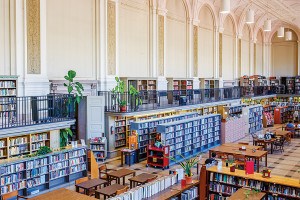The Meaning of MOVE
In many ways, you might think Philadelphia has moved past the tragedy of MOVE. We had the feel-good Rendell years, the subsequent resurgence of Center City, and Michael Nutter’s reform-minded 2007 campaign. But remember the lesson of Buffalo Creek, and the lingering effects of trauma.
“I think the MOVE bombing is right up there with the collapse of the ’64 Phils in terms of being a scar on the city’s psyche,” says Committee of Seventy CEO Zack Stalberg, editor of the Daily News at the time of the bombing. “It said to us, this is a place in which authorities could and would wipe out an entire city block because they weren’t smart or patient enough to resolve the problem peacefully. And it said to us, this is a place where a mayor can get reelected after bombing his own city and causing the deaths of several of its citizens.”
Coming to grips with hard truths like those about who we are — that can result in some serious avoidance and numbing.
ON THE MORNING of May 13, 1985, the future of Philadelphia could have gone a very different way. At lunchtime that day, the day of the bombing, the city’s business leaders were gathering at 17th and Market to embark on a bold new venture, something that marked the city’s renunciation of its parochial and Quaker past. On that day, ground would be broken for Liberty Place, the first skyscraper in our skyline-deprived metropolis to violate the long-standing gentleman’s agreement not to exceed the height of William Penn’s statue atop City Hall.
Change was in the air. Like the rest of the country, Philadelphia had gone through some dark times in the ’70s. Yet by the mid-’80s, Wilson Goode was riding high, and Philadelphia was feeling pretty good about itself — at least, as good as Philadelphia can. As the city’s first black mayor, Goode was seen as a symbol of racial reconciliation, and as the city’s previous managing director, he was heralded for his technocratic competence. In Goode’s first year, he received national praise for bringing into City Hall all the wild youths who were defacing public property with graffiti and enlisting them in a crusade to make public art. (His Anti-Graffiti Network would eventually morph into the renowned Mural Arts Program.) In his first year in office, there were even reports that Goode was being considered for the vice presidency.


